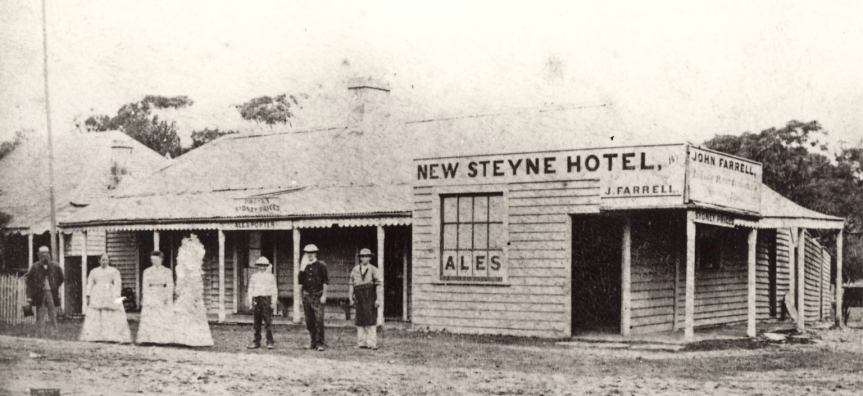The Farrell family was one of the Northern Beaches most well-known families. Their historic connection to the development of Newport, Brookvale and Manly involved stories of wealth, success, murder, arson, prison and rivalry.
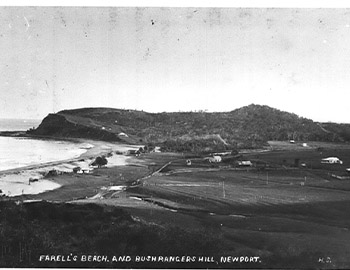
John Farrell arrives in Sydney
Convicted and transported for forgery, John Farrell arrived in Sydney from England in 1813. In 1820, he received his ticket of leave and bought land in Macquarie Street, where he and his wife Martha raised their children - Hannah, Daniel, Mary Ann and John II.
John was remarkably business minded. In 1822, he was the highest bidder on a 30-acre farm in Newport Beach, soon after purchasing an additional 40-acres nearby. For many years, Newport Beach was known as Farrell's Beach.
Gallons of rum and a vanishing son
John and Martha's eldest son Daniel, ran the Newport farm and in 1842, he and a friend made an interesting discovery - 2, 450 gallons of rum near the current site of the Newport Hotel.
After informing the police, they feared for their lives, leading to the mysterious disappearance of Daniel in 1847.
Feuds, thieves and prison sentences
John and Martha's youngest son, John II, inherited his father’s Newport farms. He also married his neighbour Mary Ann Foley who had recently lost her father, David Foley, when he was murdered the previous year. Suspicion fell on their cattle stealing neighbour, Thomas Collins. John II and Mary Ann had seven children with their eldest daughter Sarah later marrying John Collins, the son of her grandfather’s murderer.
John II and Mary Ann took occupancy of her family's 700-acre farm but as it had only been leased to Mary Ann's father, they did not own the site. They discouraged all new leases of the farm by stealing cattle and other goods. When James Therry, nephew of their neighbour John Joseph Therry, leased the site and renovated the homestead, it was burnt down. John II was the prime suspect.
The feud worsened with charges, counter charges and cattle stealing until finally in 1864, John was convicted and sentenced to seven years hard labour for stealing and killing ten cows. Soon after, Mary Ann Farrell was charged with stealing 13 calves and sentenced to two and a half years in prison. At her trial, witnesses produced evidence of carcasses and bones found at Farrell’s Paddock, a ten-acre site the family owned in Manly. Their son John III, continued to harass the occupiers of the former Foley Farm and was sentenced to three years in prison.
After John Farrell II’s prison release in 1869, he left the troubles of Newport behind, taking up residence in Manly and purchasing the New Steyne Hotel.
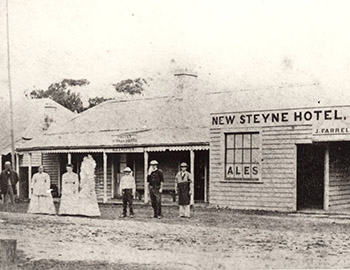
The Farrells come to Manly
Despite their notoriety, the Farrell family were able to gain public respect. They remained wealthy and purchased considerable Manly property during the 1870s.
On Anniversary Day1871, John II rented the recently erected pavilion in Ivanhoe Park to run a community sports program. In 1873, he purchased land on the Corso where he built a butcher shop, the Colonnade Hotel and a large house.
In 1886, trouble began between Hannah and her sister Mary Jane over Farrell’s Paddock in Manly. Their brother James had purchased the land in 1871 and gifted the 10-acre property to Mary Jane. However, their mother had believed the land was owned by her husband John II and she gifted the property Hannah.
Mary Jane took Hannah to court over the land in 1903 and won. In 1905, she sold all the land except the house and its immediate surrounds. Her mother was allowed to live in the cottage until her death in 1912.
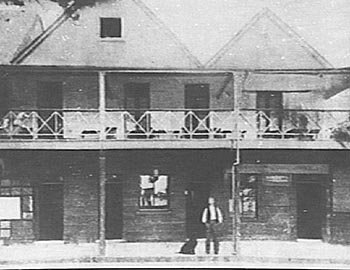
John Farrell III inherited the Colonnade Hotel when his father died in 1889.
Unable to make bank demands during the Depression, he mortgaged the hotel and butcher shop to his sister Hannah, who was left widowed and childless when her husband John Malcolm died two years after their wedding. She owned the hotel (later renamed the Ivanhoe Hotel) until her death in 1933.
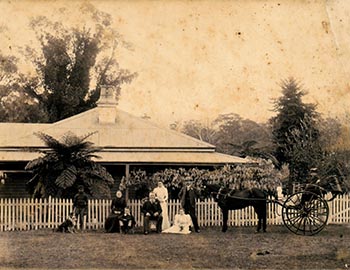
The Brookvale connection
Mary Jane Farrell married Sydney Alexander Malcolm in 1883 and with her brother Daniel, purchased eight acres of the Brookvale Farm where they built a beautiful stone house.
Originally known as Coolabah, later Brookvale House, it sat on the western side of Pittwater Road where the Warringah Mall bus stop lies today. Sydney died in 1891 but the family remained at Brookvale House until its demolition for the construction of Warringah Mall in the early 1960s.
Daniel Farrell lived at Brookvale House with his sister’s family and cousin Emma Rogers, carer for Mary Jane’s children. Daniel took great interest in the local area, later becoming president of both the Brookvale Progress Association and the Manly to Pittwater Tramway League. Emma later bought land at Brookvale and with her cousin Daniel, built a stone house called“Yarrawa” but later named ‘Inverness’.
The family were in court again when Mary Jane’s daughter Jane took her Aunt Emma to court, demanding the land be transferred to her as she had lent Daniel money to build the house. The court ordered Emma to pay Jane £550 alongside selling the property. Inverness later became a doctors surgery and eventually the first home of the Manly Warringah Sea Eagles (now still on this site). Jane sold part of her land to the newly formed Warringah Shire Council for the construction of Brookvale Park.
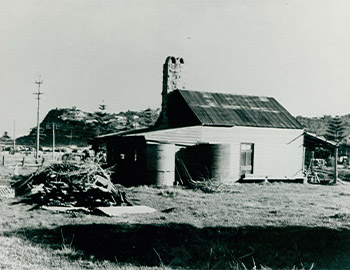
A return to Newport
After losing much of his fortune during the Depression, John III retired to Newport and married his wife Rosalie in 1922. In his later years, “Johnny” cut an extremely picturesque figure around Newport, riding around with his flowing beard and bowler hat. He gradually sold off his Newport land with just four acres remaining when he died at aged 80 in 1933.
If you would like further information on the above story, please contact our Local Studies team by emailing LocalHistory@northernbeaches.nsw.gov.au. All historical images included in this story are provided by the Northern Beaches Council Local Studies Collection, accessible through History Hub.

